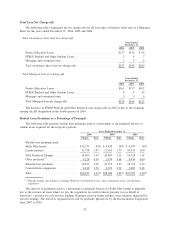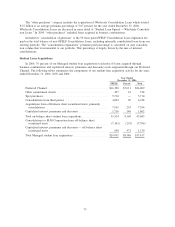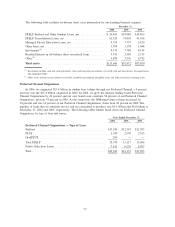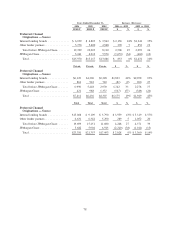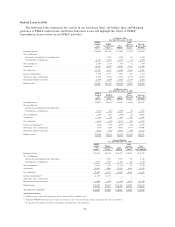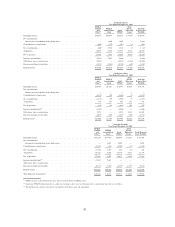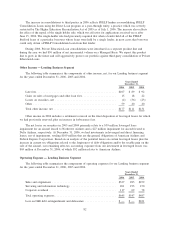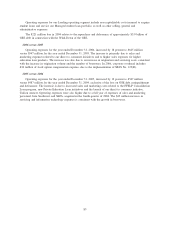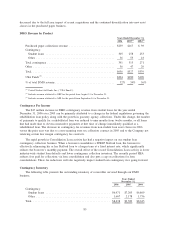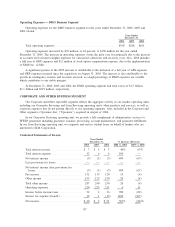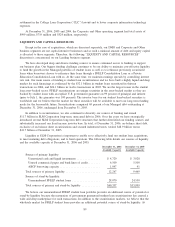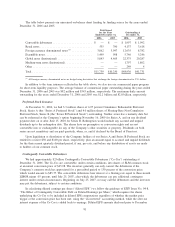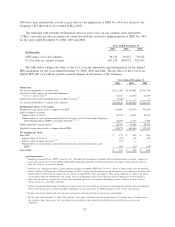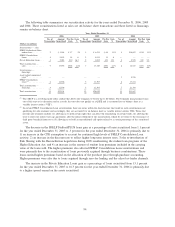Sallie Mae 2006 Annual Report Download - page 85
Download and view the complete annual report
Please find page 85 of the 2006 Sallie Mae annual report below. You can navigate through the pages in the report by either clicking on the pages listed below, or by using the keyword search tool below to find specific information within the annual report.
DEBT MANAGEMENT OPERATIONS (“DMO”) BUSINESS SEGMENT
In our DMO operating segment, we provide a wide range of accounts receivable and collections services
including student loan default aversion services, defaulted student loan portfolio management services,
contingency collections services for student loans and other asset classes, and accounts receivable management
and collection for purchased portfolios of receivables that are delinquent or have been charged off by their
original creditors as well as sub-performing and non-performing mortgage loans. In the purchased receivables
business, we focus on a variety of consumer debt types with emphasis on charged off credit card receivables
and distressed mortgage receivables. We purchase these portfolios at a discount to their face value, and then
use both our internal collection operations coupled with third party collection agencies to maximize the
recovery on these receivables.
We account for our investments in charged off receivables in accordance with the AICPA’s Statement of
Position (“SOP”) 03-3, “Accounting for Certain Loans or Debt Securities Acquired in a Transfer.” Under this
standard, we establish static pools of each quarter’s purchases and aggregate them based on certain common
risk characteristics and initially record them at fair value based on the pool’s estimated future cash flow and
internal rate of return. Under SOP 03-3, the yield that may be accreted as collections revenue on such loans is
limited to the excess of our estimate of undiscounted expected principal, interest and other cash flows from
the pool over our initial investment in the pool. We recognize income each month based on each static pool’s
effective interest rate. The static pools are tested quarterly for impairment by re-estimating the future cash
flows to be received from the pools. Subsequent increases in estimated future cash flows are recognized
prospectively through a yield adjustment over the remaining life of the static pool. When estimates of future
cash flows to be collected are projected to be lower than projected, the carrying value of the pool is impaired
and written down through a valuation allowance to maintain the effective interest rate. Cash collected on pools
whose principal has fully amortized is recognized 100 percent in income.
The private sector collections industry is highly fragmented with few large public companies and a large
number of small scale privately-held companies. The collections industry is highly competitive with credit card
collections being the most competitive in both contingency collections and purchased paper activities. We are
responding to these competitive challenges through enhanced servicing efficiencies and by continuing to build
on customer relationships through value added services and financings.
The following table includes the results of operations for our DMO operating segment.
Condensed Statements of Income
2006 2005 2004
2006 vs.
2005
2005 vs.
2004
Years Ended
December 31,
% Increase
(Decrease)
Fee income......................................... 397 360 300 10 20
Collections revenue................................... 239 167 39 43 328
Total income ....................................... 636 527 339 21 55
Operating expenses ................................... 358 288 161 24 79
Net interest expense . . . ............................... 23 19 13 21 46
Income before income taxes and minority interest in net earnings
of subsidiaries ..................................... 255 220 165 16 33
Income taxes ....................................... 94 81 65 15 25
Income before minority interest in net earnings of subsidiaries . . . 161 139 100 16 39
Minority interest in net earnings of subsidiaries .............. 4 4 1 — 300
Net income......................................... $157 $135 $ 99 16% 36%
Revenues from USA Funds represented 32 percent, 34 percent and 56 percent, respectively, of total DMO
revenue in 2006, 2005 and 2004. The percentage of revenue generated from services provided to USA Funds
84


